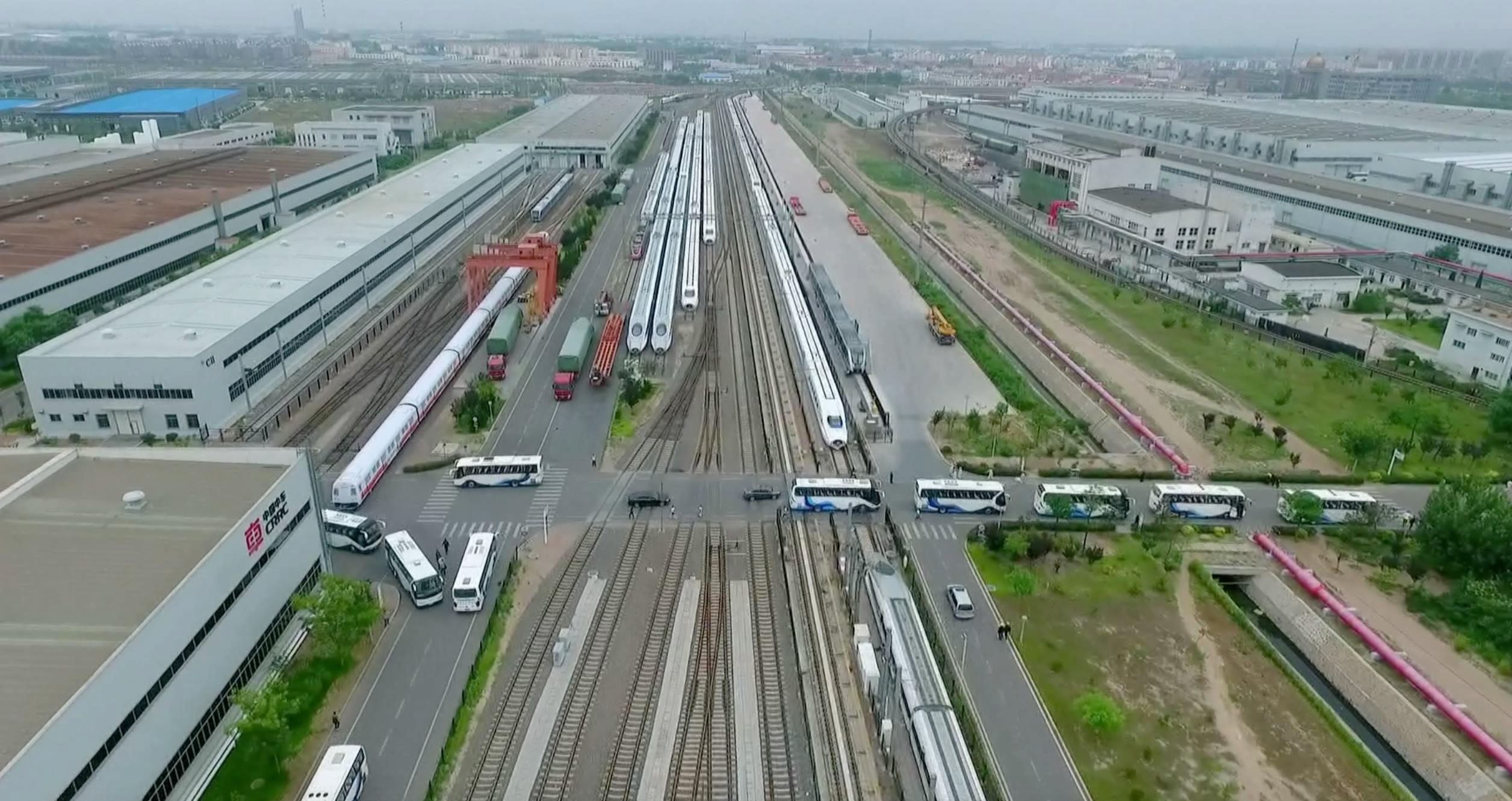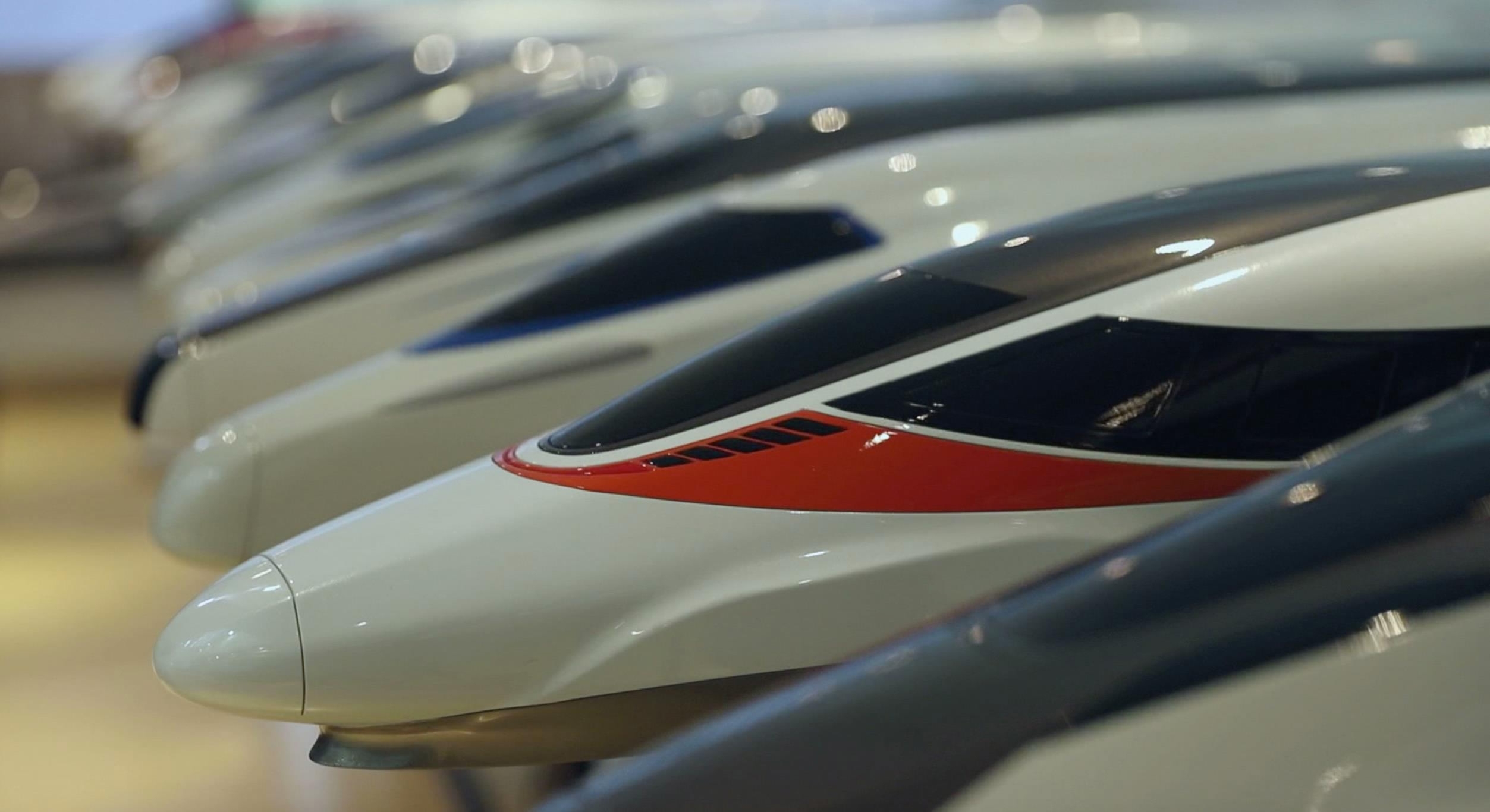
Tech & Sci
11:11, 08-Aug-2017
Made in China: design and manufacture of high-speed trains

By CGTN's Yang Wentao, Zhu Qinliang
The giant facility lies in the suburbs of the eastern city of Qingdao. Every morning, hundreds of shuttle buses bring 10,000 workers here. Almost half of the high-speed trains in China were designed and manufactured here. Its 200 workshops produce more than 40,000 components, and 72 special aluminium alloy plates are seamlessly welded together.

The CRH factory in Qingdao./CGTN
The CRH factory in Qingdao./CGTN
Every minute, 70 centimetres of welding is processed. The typical high-speed train has eight carriages, requiring a total of 18.4 kilometers of welding, most of the work is done by robots. The bogies are another core component of the trains, advanced manufacturing technology ensure their quality, and hence their safety on the railways. In processing the hollow axles, the permitted margin of error is less than one tenth of a millimeter.

Manufacturing CRH Trains. /CGTN Photo
Manufacturing CRH Trains. /CGTN Photo
The 1.8 million square meter plant complex contains 32 fully-operational workshops, this massive facility has the capacity to turn out three brand new high-speed trains every four days.
Ding Sansan is the high-speed train’s designer, he’s also the deputy chief engineer of CRRC Qingdao Sifang Co, a Chinese publicly traded rolling stock manufacture. A main focus of his work is aerodynamics – a field previously the preserve of aeroplane and rocket engineers.

Using Numerically-controlled machine to manufacture CRH trains./CGTN Photo
Using Numerically-controlled machine to manufacture CRH trains./CGTN Photo
“In our design, we have to take the aerodynamics into account. When a train travels at 300 to 350 kilometers per hour, 80-90 percent of the resistance is from the wind.”

Aerodynamic Modes of CRH Trains before finalizing the design./CGTN Photo
Aerodynamic Modes of CRH Trains before finalizing the design./CGTN Photo
380 kilometers an hour is roughly the speed of an aeroplane cruising at low speed. Unlike planes, however, high-speed trains have to contend with near-ground air streams, the shock generated by other, passing trains and the drastic airflow change in tunnels. In short, these trains are operating in an environment vastly more complex than the empty sky. With the aid of VR technology, they have produced several improved designs.

Engineers are using VR technology to design the CRH Trains. /CGTN Photo
Engineers are using VR technology to design the CRH Trains. /CGTN Photo
In one year alone, the plant turned out more than 200 high-speed trains. The total length of Chinese rail is expanding by 2,000 kilometers every year. By 2025, it will be an unprecedented 38,000 kilometers long.

SITEMAP
Copyright © 2018 CGTN. Beijing ICP prepared NO.16065310-3
Copyright © 2018 CGTN. Beijing ICP prepared NO.16065310-3